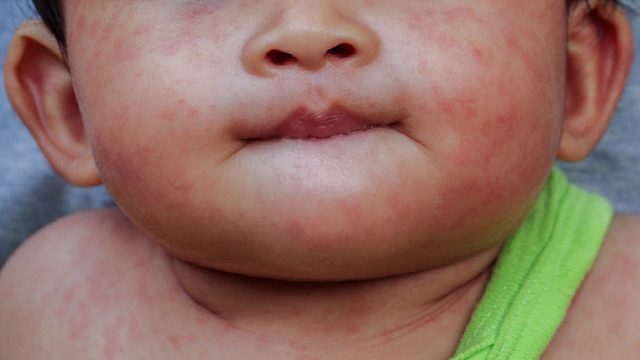SUMMARY
This is AI generated summarization, which may have errors. For context, always refer to the full article.

MANILA, Philippines (UPDATED) – At least 18 Lumad children from several remote communities in Malapatan town in Sarangani died from suspected measles over the last 3 weeks.
Department of Health (DOH) Undersecretary Enrique Domingo confirmed this with Rappler Tuesday night, November 27.
Domingo said the DOH has not yet declared a measles outbreak as tests still have to be done to confirm the children were infected with measles. (FAST FACTS: What is measles and how can it be prevented?)
Dr. Diomedes Remitar, the Malapatan health chief, said the reported measles deaths within the 3-week period were based on information gathered from barangay health workers and village officials of sitios Lower and Upper Kyogam, Mahayag, Lino, Datal Nai and Alna of Barangay Upper Suyan.
Remitar said 23 people from Barangay Upper Suyan were also confined at the R.O. Diagan Hospital in General Santos City due to high fever, skin rashes, conjunctivitis, and other flu-like illnesses – all symptoms of measles. Doctors in the hospital later confirmed that 15 of the patients were diagnosed to have measles.
Village officials, Remitar said, had reported that since the “outbreak” was discovered on November 5, at least 100 B’laan Lumad had already gotten sick in Upper Suyan.
Remitar said to prevent the disease from spreading further, they vaccinated around 500 infants and children in the area while those that have gotten sick were also being treated.
He said the problem they encountered in swiftly responding was the difficult access to the affected communities as health workers had to walk for several hours.
Federico Yadao, medical technologist at the Sarangani Provincial Health Office (PHO), said they have sent samples to the Research Institute for Tropical Medicine (RITM) in Manila to corroborate the local findings on measles.
“The provincial government of Sarangani also provided medicines, vaccines and other needed supplies for the two waves of medical mission conducted last week,” said Yadao, adding that the medical mission was initially held on November 19.
Yadao said during those medical missions, 74 children, majority of whom were aged one to 5, had exhibited symptoms of the disease.
Yadao said they also found out that the disease was concentrated in sitios of Barangay Upper Suyan, particularly in Lower Kyugam with 22 cases, 14 in Alna, 15 in Mahayag, 7 in Uper Kyugam, 5 in Lino, 4 cases each in Alnaob and Datalnay and one case each in Dlandang, Akbual and Klarak.
“Upper Suyan is roughly 3 hours ride but reaching the nearest Sitio Alna would take 7 hours trek. It takes another 5 more hours of trekking to get into the farthest Sitio Upper Kyugam,” he said.
The Sarangani PHO said majority of those who died suffered from pneumonia, which could be the result of a measles infection.
“We already have confirmed cases of measles in other municipalities like Glan and Alabel but these were immediately controlled. What happened in Upper Suyan was very quick that it affected as many people in so short a time,” Yadao added.
Yadao said an investigation was also being conducted on why so many people had been affected by the disease but added that they initially suspect the people’s behavior towards immunization was a contributing factor.
The DOH was “still waiting for results of confirmatory tests. But we are monitoring for additional cases and doing supplemental measles immunization for the community,” Domingo said.
The DOH has repeatedly reminded the public to go to their nearest health care providers for a measles vaccine because the disease is supposed to be vaccine-preventable.
Prior to this, measles outbreaks were declared in Negros Oriental, a barangay in Taguig, Zamboanga City, Davao Region, and Davao City.
As a response, the DOH, launched its “Ligtas Tigdas” supplemental measles immunization program last April. The supplemental immunization program is done to achieve “herd immunity” status, where people who already have measles will be “walled off” from the rest of the population.
The program, however, saw the DOH fall below targets with few children vaccinated.
In a media forum in September, DOH National Immunization Program manager Maria Silva said this was because many parents were still scared of government’s free vaccines almost a year after the Dengvaxia controversy. – Rappler.com
Add a comment
How does this make you feel?
There are no comments yet. Add your comment to start the conversation.